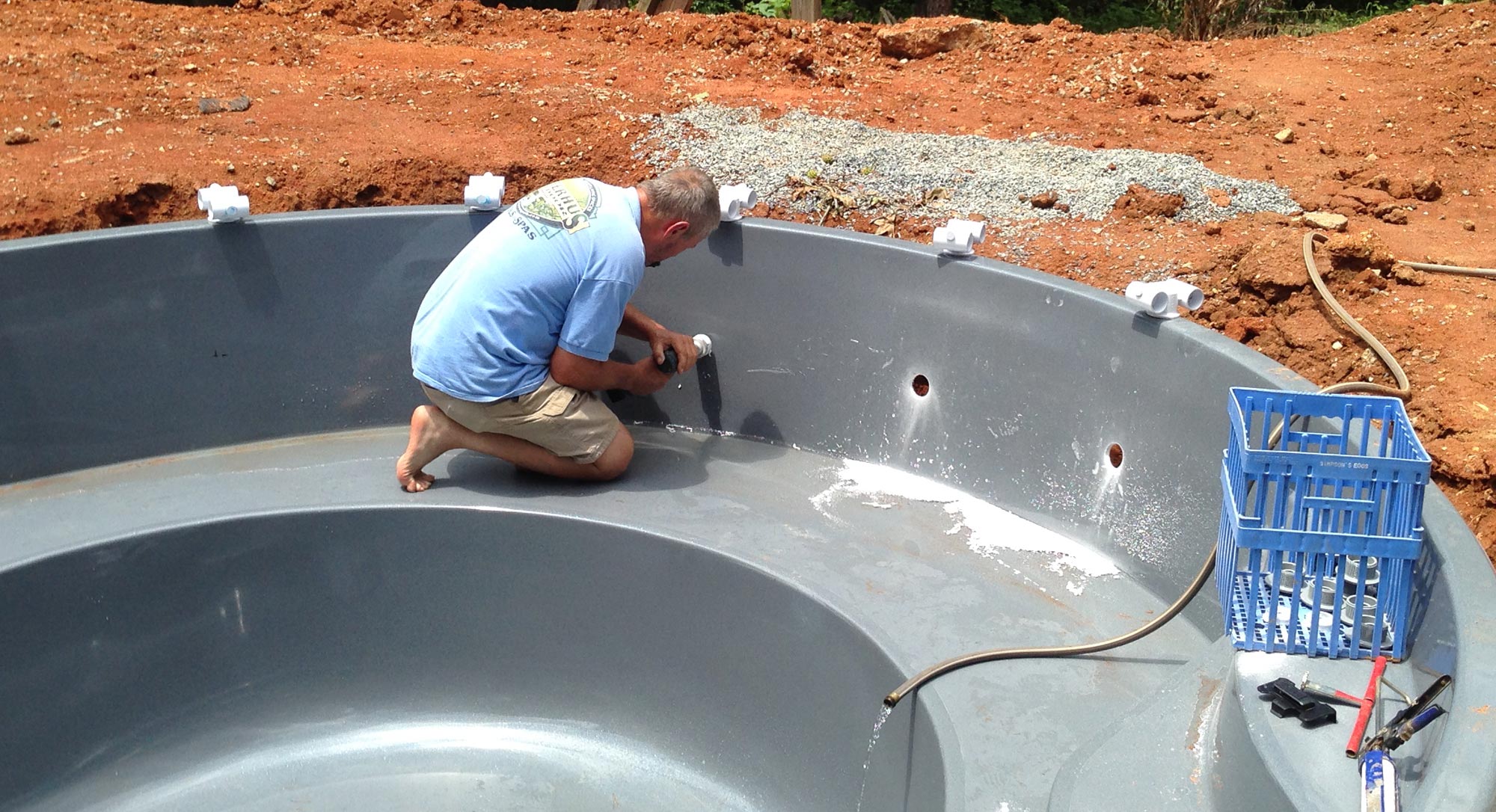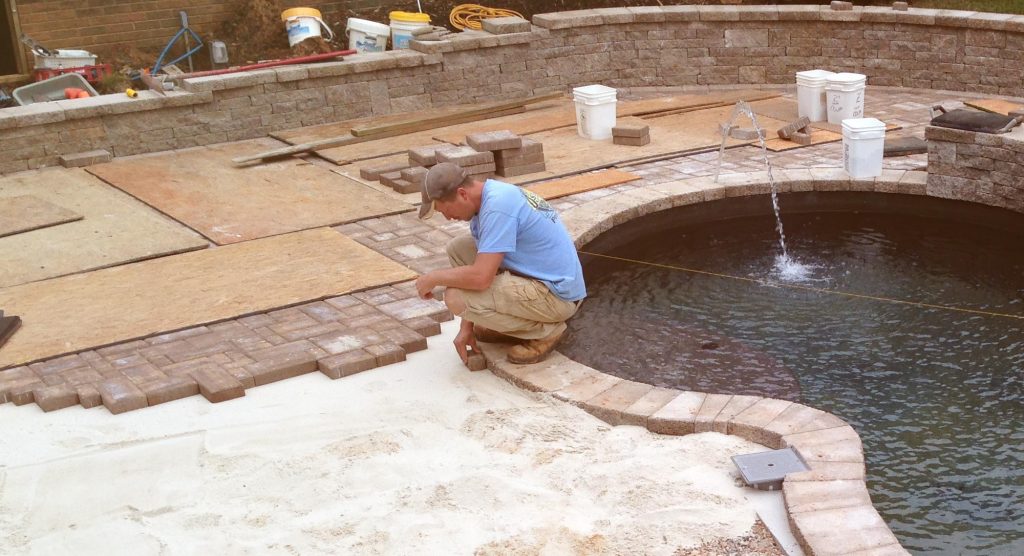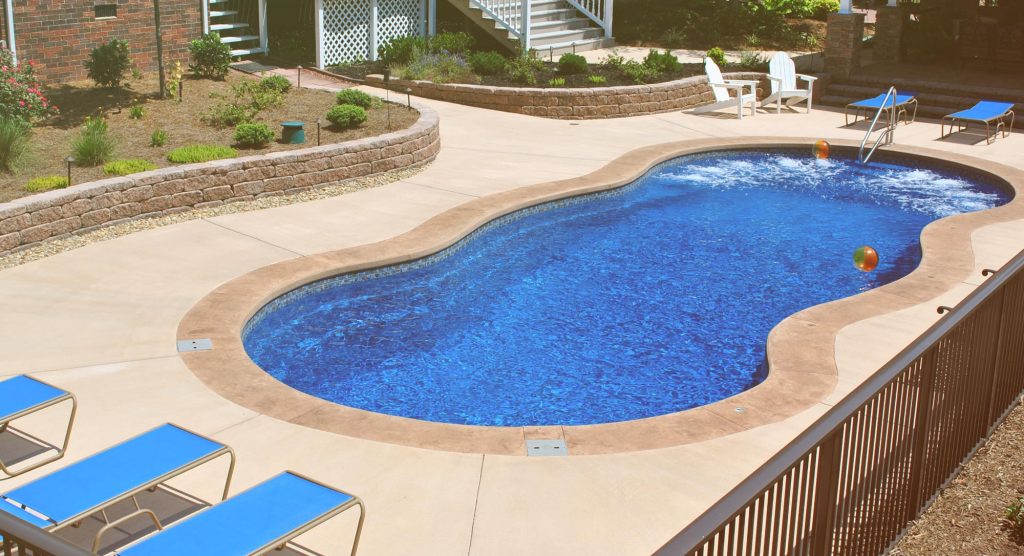INSTALLATION PROCESS
From start to finish, our professional installation team will handle it all!
Excavation & Setting
Prior to excavation, the property utilities are located and all zoning and building permits are secured. The dig site is laid out to the preference of the customer with the height of the pool in relation to the house and other parts of the property taken into consideration. Once the dig site is laid out, the pool hole is dug precisely to the shape of the pre-built pool shell. After the hole is finished, the floor of the hole is bedded with approximately 4 inches of pea gravel to give the pool a flat and compact surface on which to rest. Then the pool is lowered into the hole, either by boom truck or crane, and then leveled within fractions of an inch from shallow end to deep end.

Plumbing and Filling
The fiberglass is cut to accommodate skimmers, returns, hydrotherapy jets, and LED lights. Once sealed with silicone, the pool is filled with water as the crew backfills behind the pool with gravel. Hayward equipment options are available, and generally include a variable speed pump, a salt chlorinator, a sand or cartridge filter and a robotic cleaner. Automation is available to enable controlling pool pump, lights, and water features easily with a cell phone. Osterhus Outdoors is “All Hayward,” a designation which provides a 3-year warranty period on pool equipment.

Pool Features
Optional features are added to the pool at different phases of construction. Customers may choose from features such as waterfalls, slides, tanning ledges (pictured below), and spill-over spas to design the pool area to fit their lifestyle. Retaining walls are sometimes chosen to add depth to the project or may be necessary to accommodate the lot parameters.

Electric
The pool equipment is placed on a pad, away from the pool area. The pool equipment and automation must be wired by a licensed electrician. Before construction can be completed and concrete poured, the electrical connections must be inspected by local county inspectors who ensure that the electrical components of the pool are properly and safely installed and that the pool is properly “bonded” to prevent the buildup of static electricity in or around the pool.

Pool Deck
Preparing and completing the pool deck is the final step in the construction of a pool. If retaining walls are used, they will be built prior to pouring concrete. The concrete is formed over the lip of the pool, making a cantilevered edge. Usually, concrete is colored with integral color added to the concrete mix, providing color throughout, not just on the surface. Stamping and staining the concrete are optional. Stamping is done before the concrete cures. Staining is done afterward. Paver decks are also available and gaining in popularity. Pavers are laid on concrete and filled with polymeric sand for a permanent surface. Pavers are more expensive but have an advantage over concrete, which tends to crack over time.

Final Touches
An option as a final step at construction or installed at a later time, waterline tile adds beauty to the pool and protects the fiberglass above the waterline from fading from long-term sun exposure.
A safety cover is a good option for the winter if you are closing your pool. You can also leave the pool open and enjoy the aesthetic features of the pool in the winter. The decision is usually dependent upon the surrounding area and debris and leaves that might make the pool difficult to keep clean in the winter.
Prior to leaving, the construction site is cleaned, the pool water is balanced and the homeowner is provided with information on equipment warranties and maintenance of the pool.

